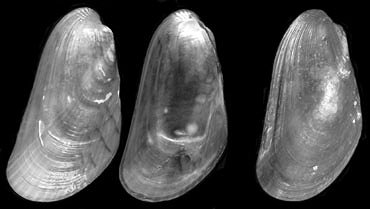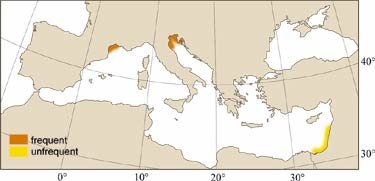
|
Relevant Synonyms
Misidentification
|
|
| photo: S. Gofas / Coll. Verlaque |
|
SHORT
DESCRIPTION
color :
pale olive-green with irregular brownish-purple markings and with the posterior lines a pale yellow-brown.
common size :
10-25 mm in length, up to 12 mm in width. |
DISTINGUISHING CHARACTERISTICS
BIOLOGY / ECOLOGY
habitat :
an opportunistic species, attached by byssus to hard or soft substrata; lives in sheltered areas such as lagoons or estuaries subtidally to 20 m. |
|
1st
Mediterranean record
|

|
|
DISTRIBUTION
|
ESTABLISHMENT SUCCESS
speculated reasons for success :
|
|
|
MODE OF
INTRODUCTION |
IMPORTANCE TO
HUMANS |
|
KEY
REFERENCES
|
|
|
 Modiola senhousia Benson in Cantor, 1842
Modiola senhousia Benson in Cantor, 1842